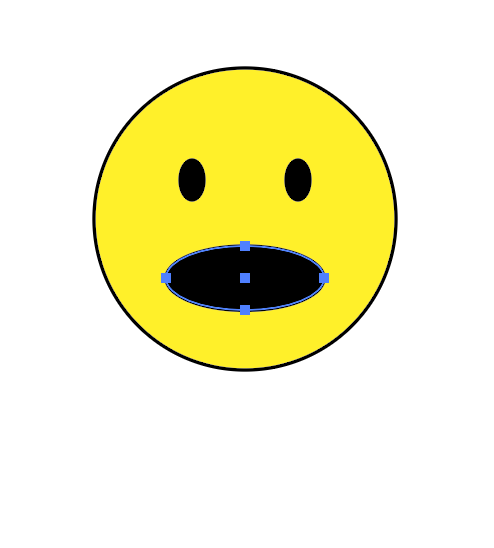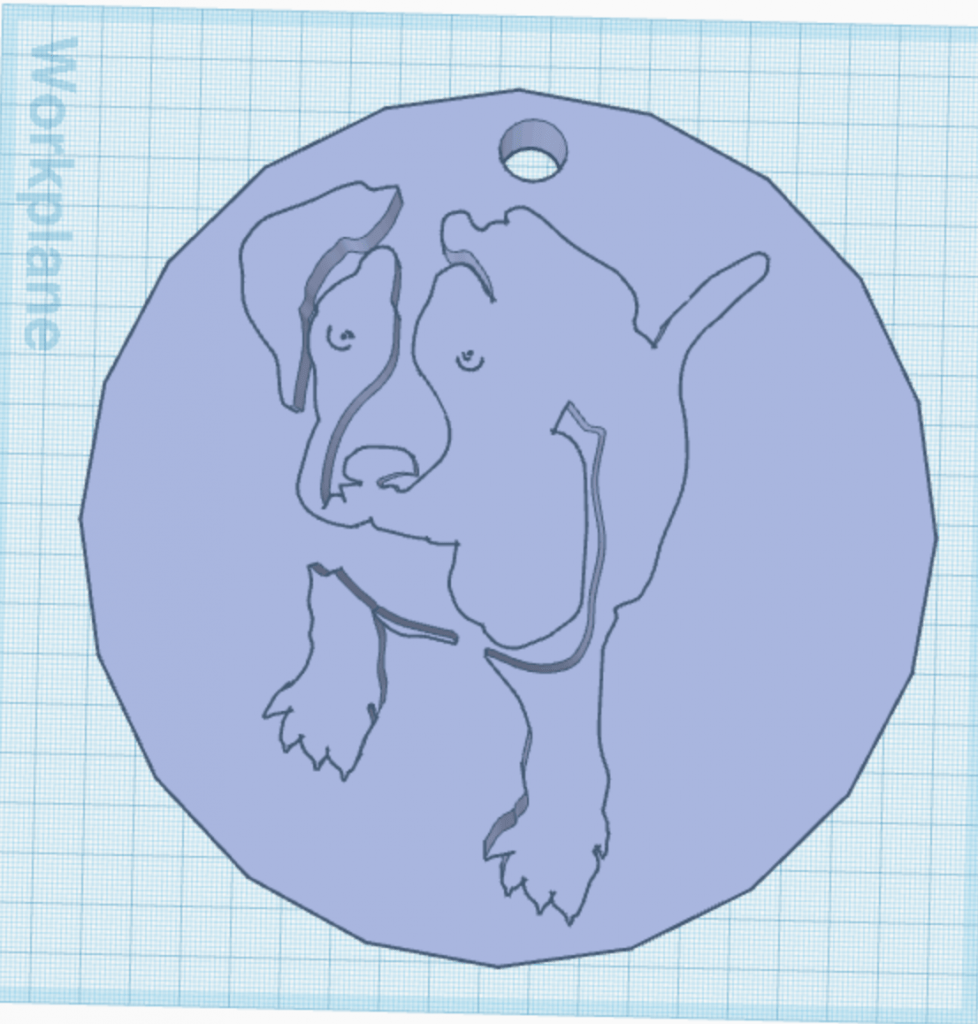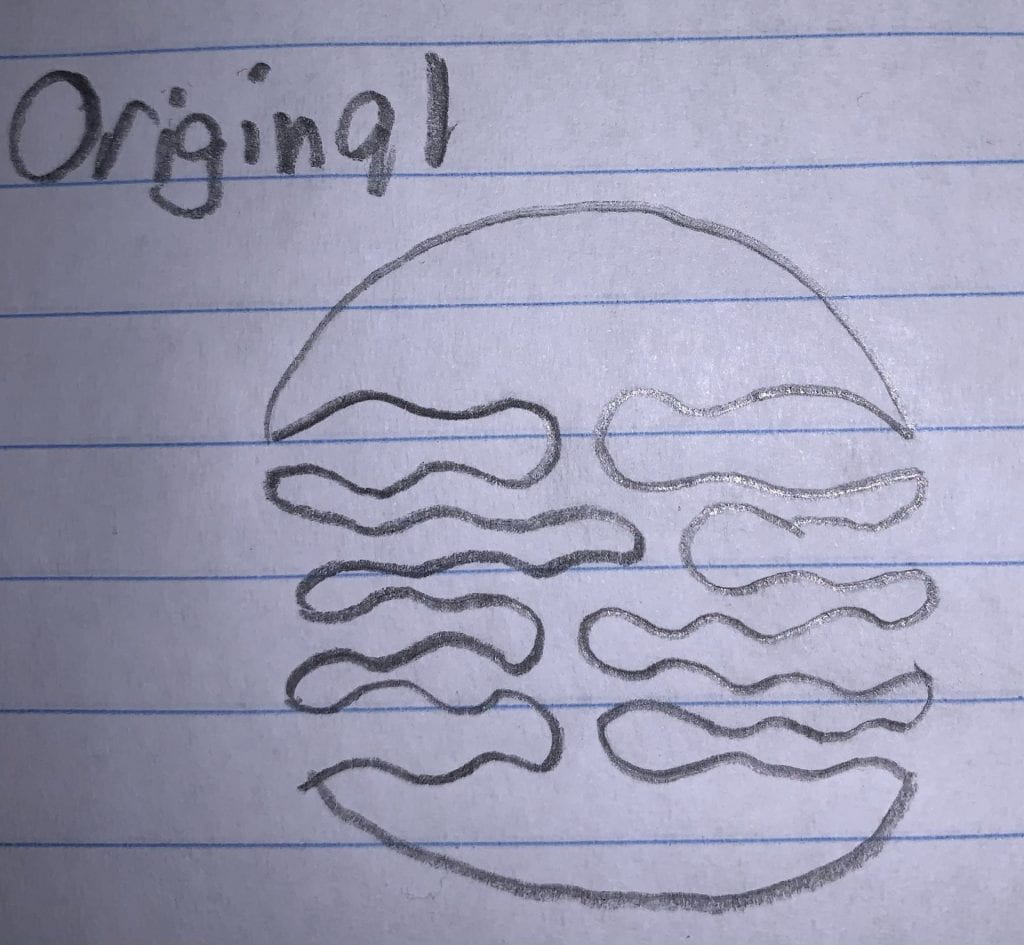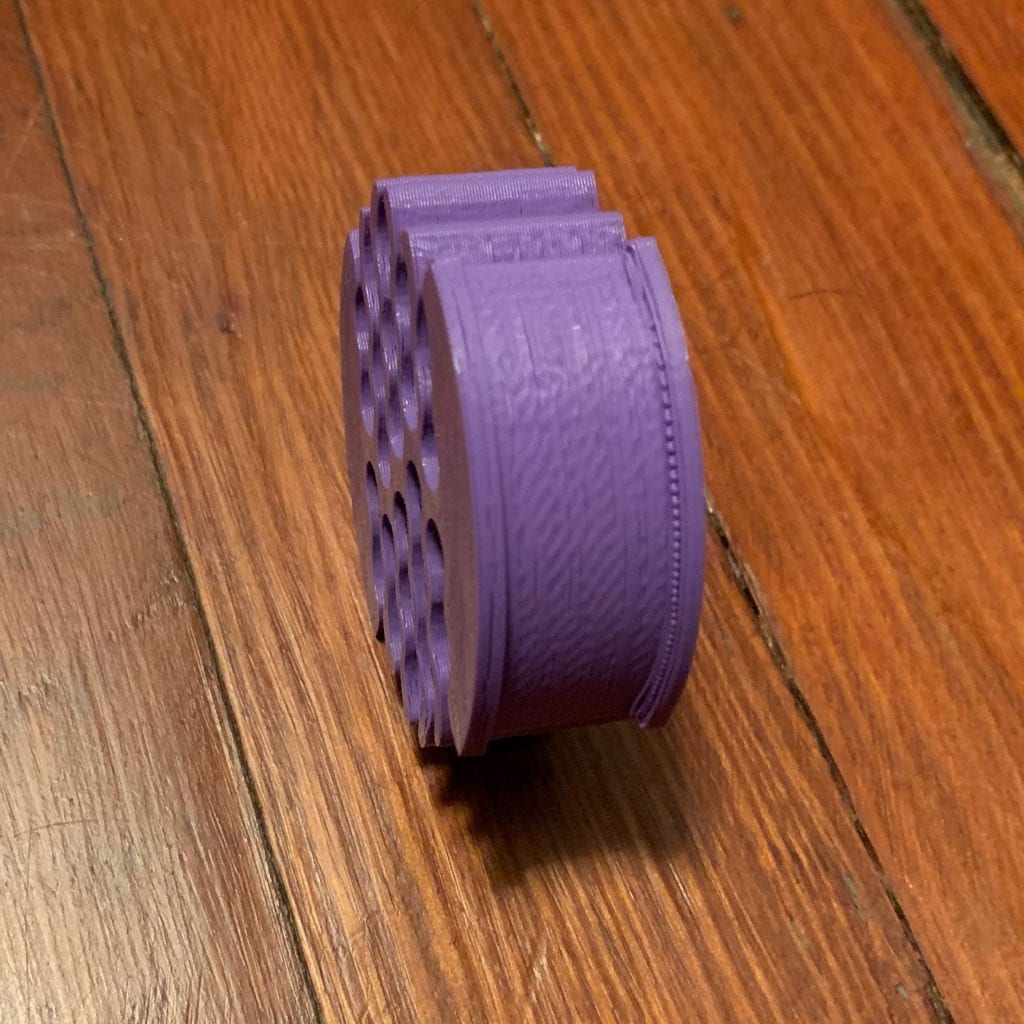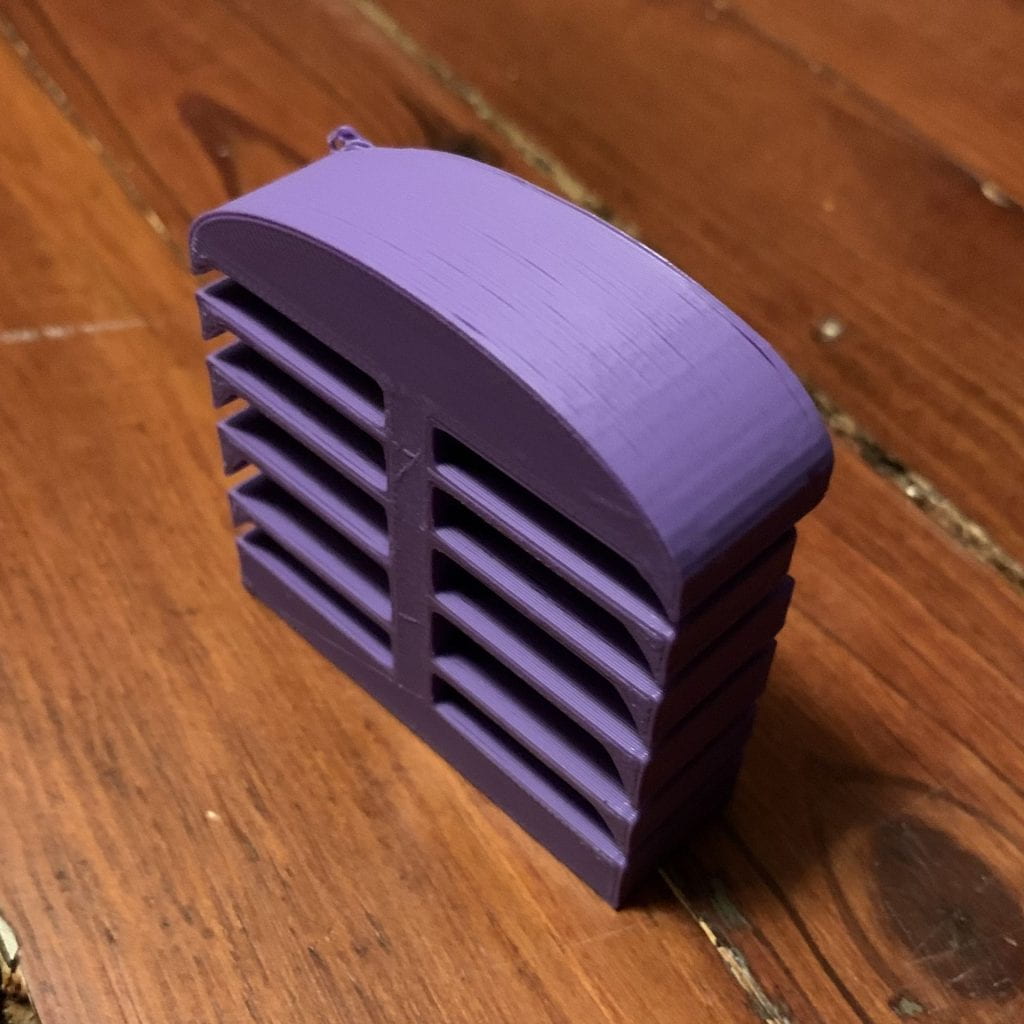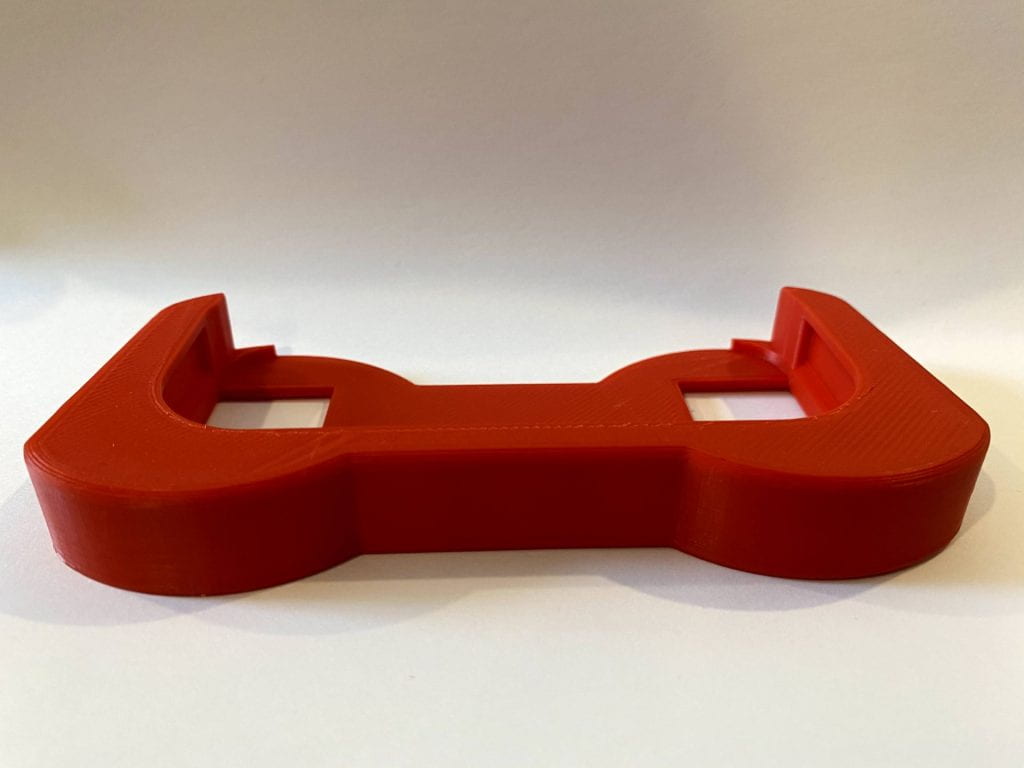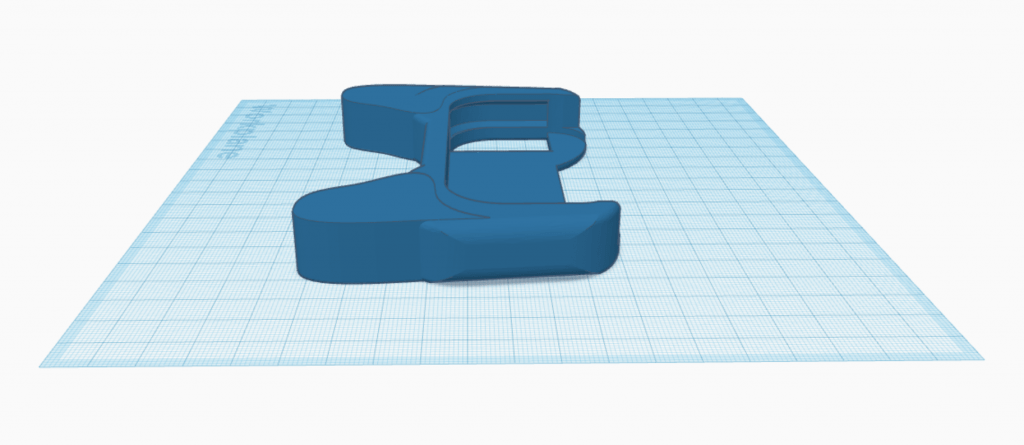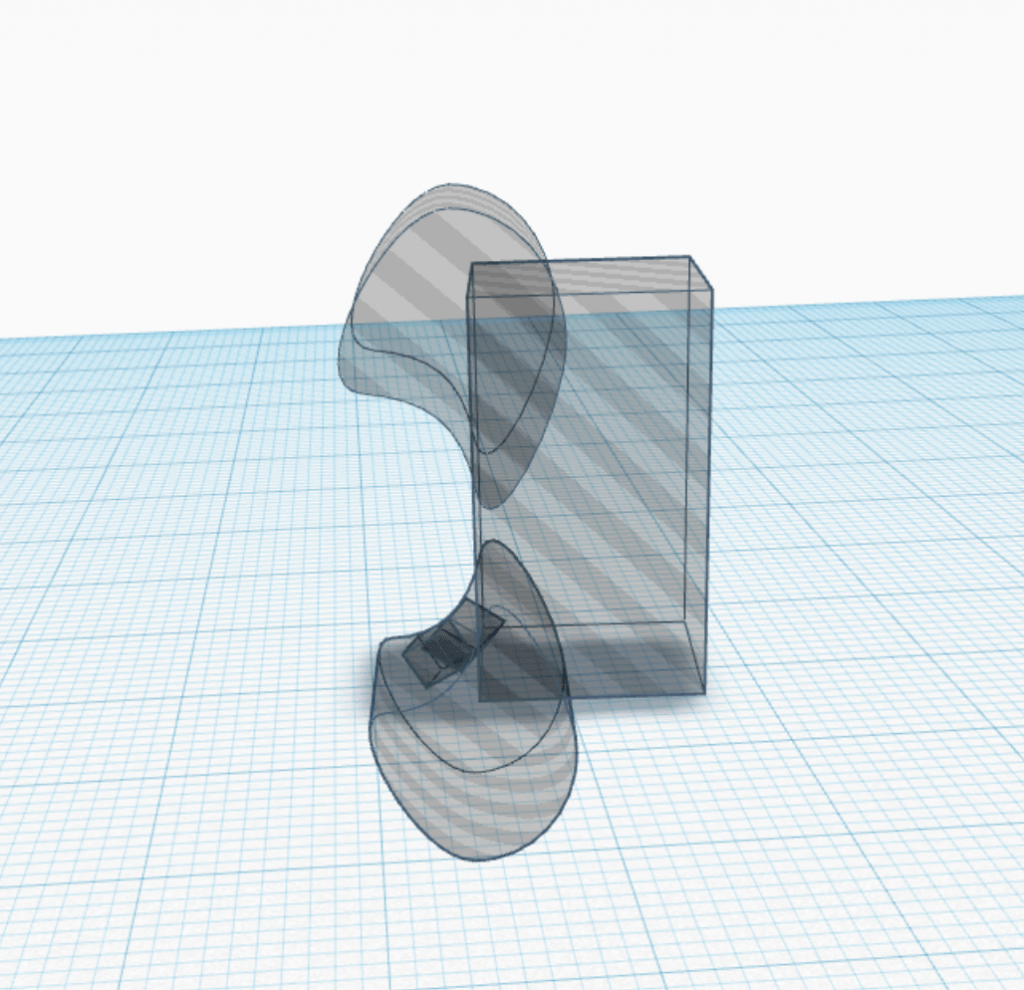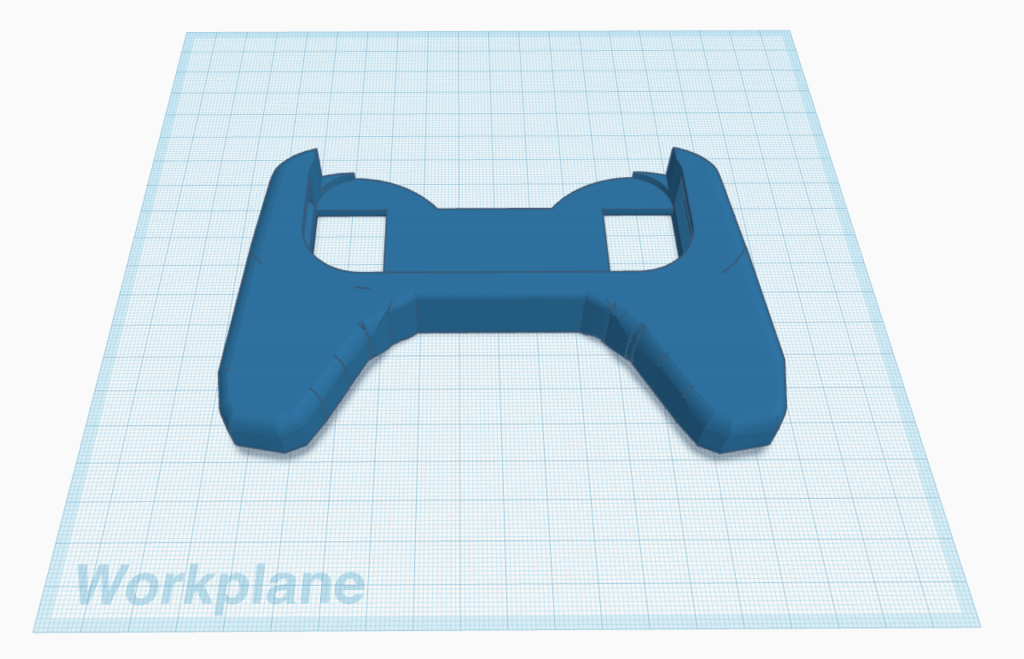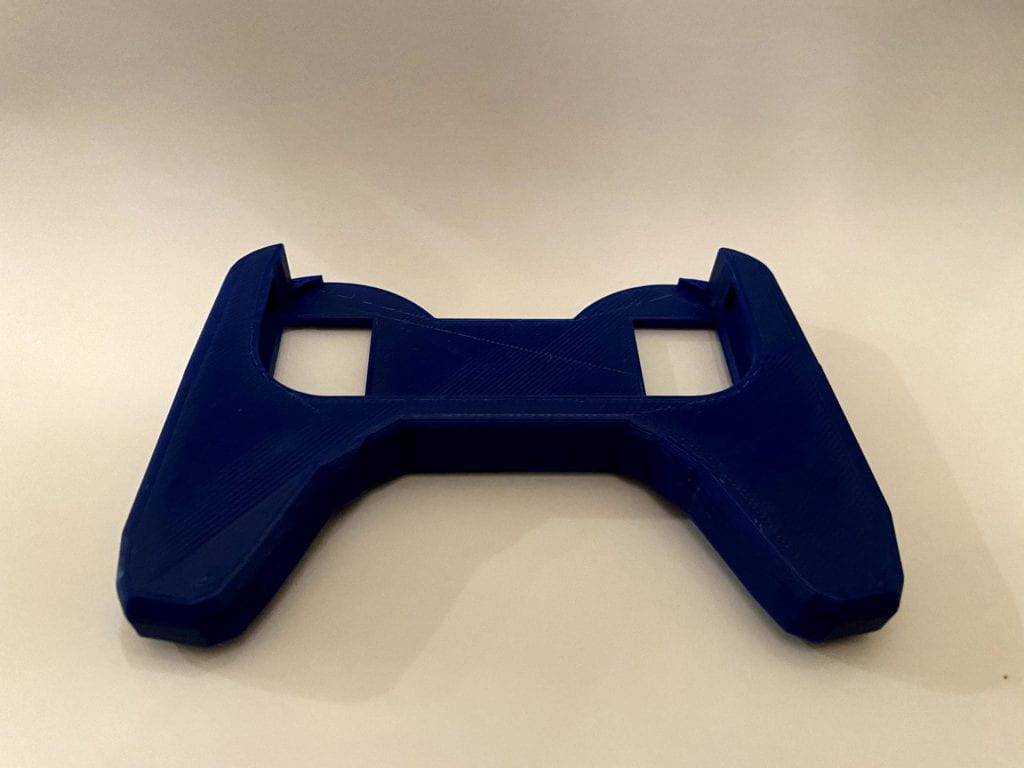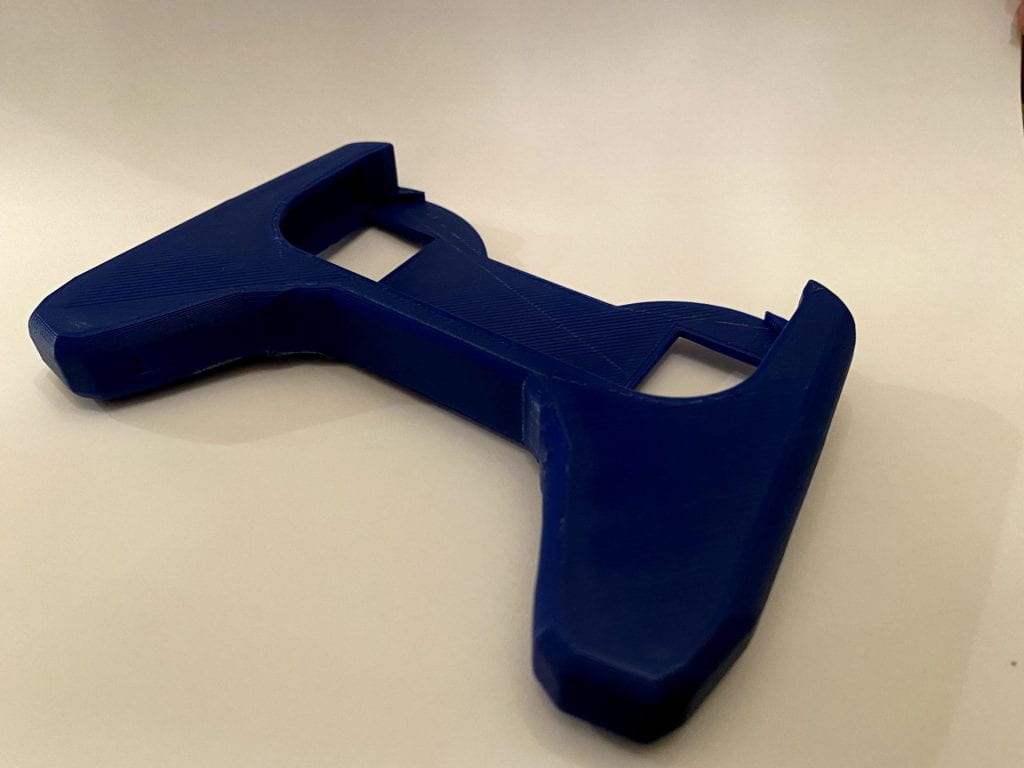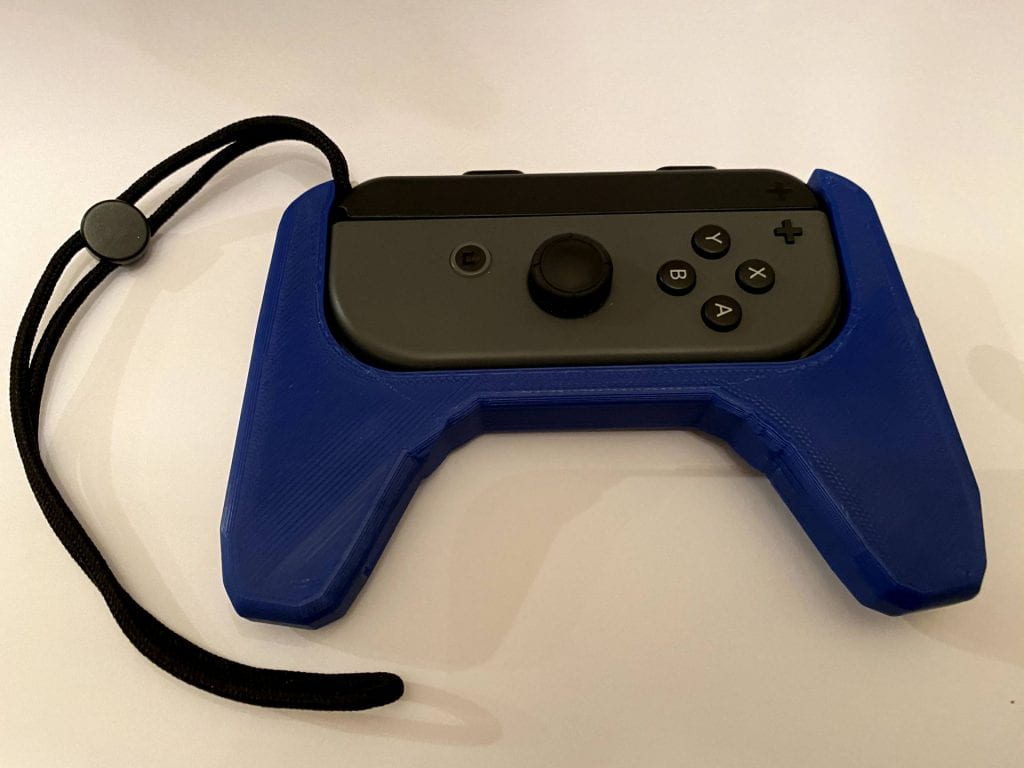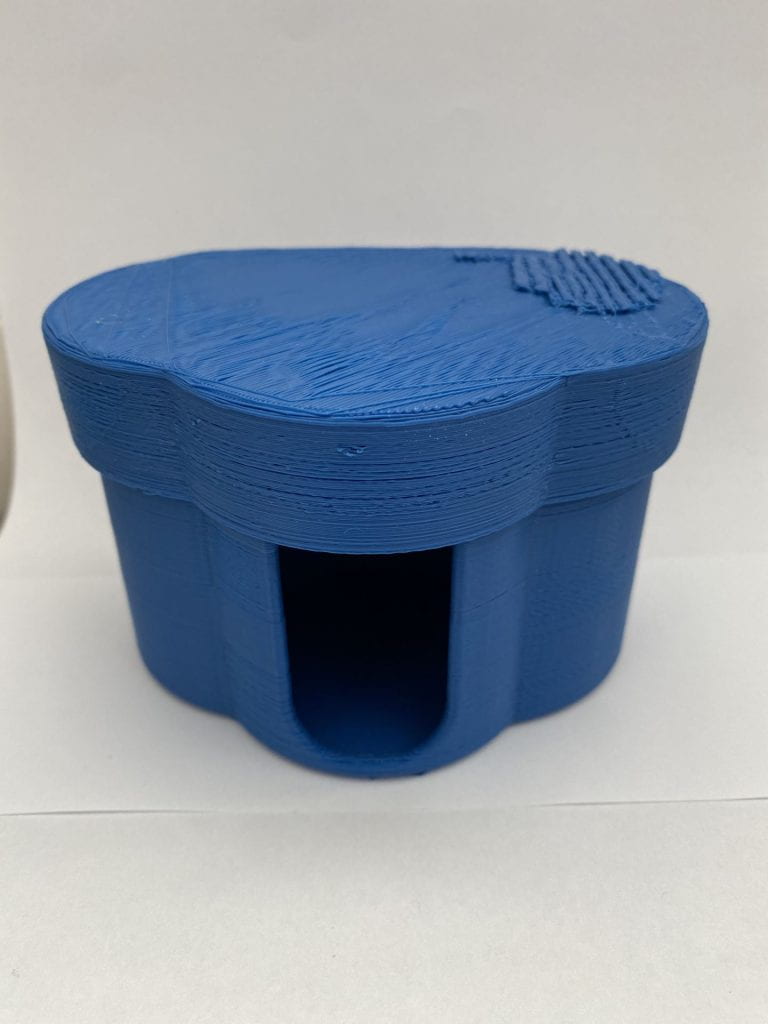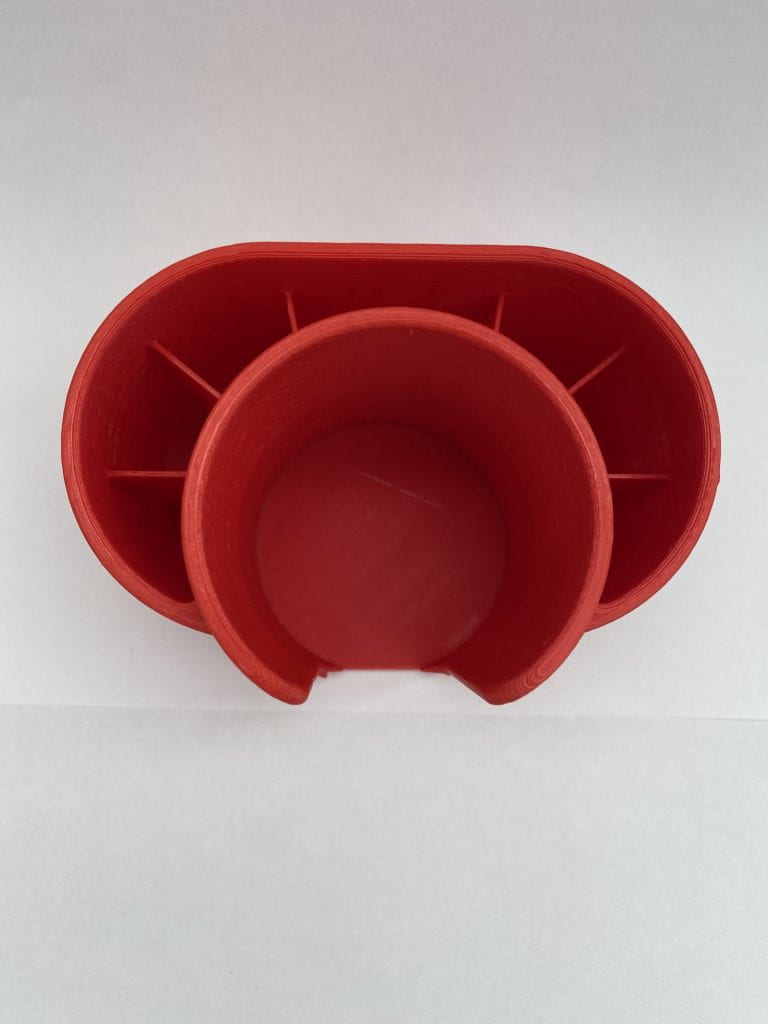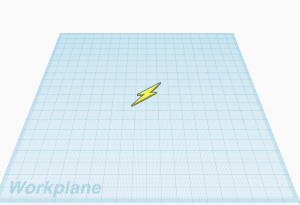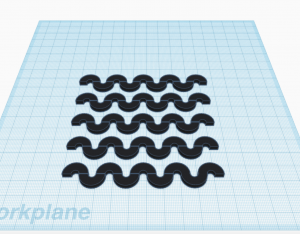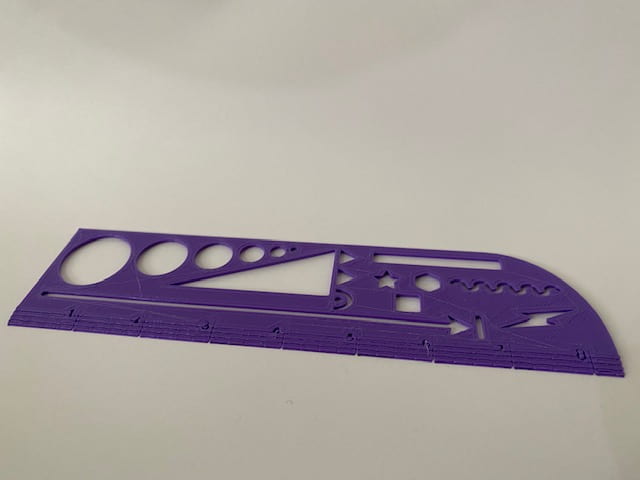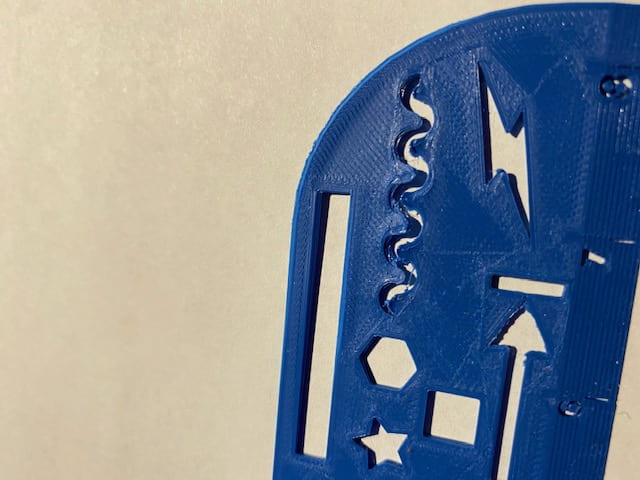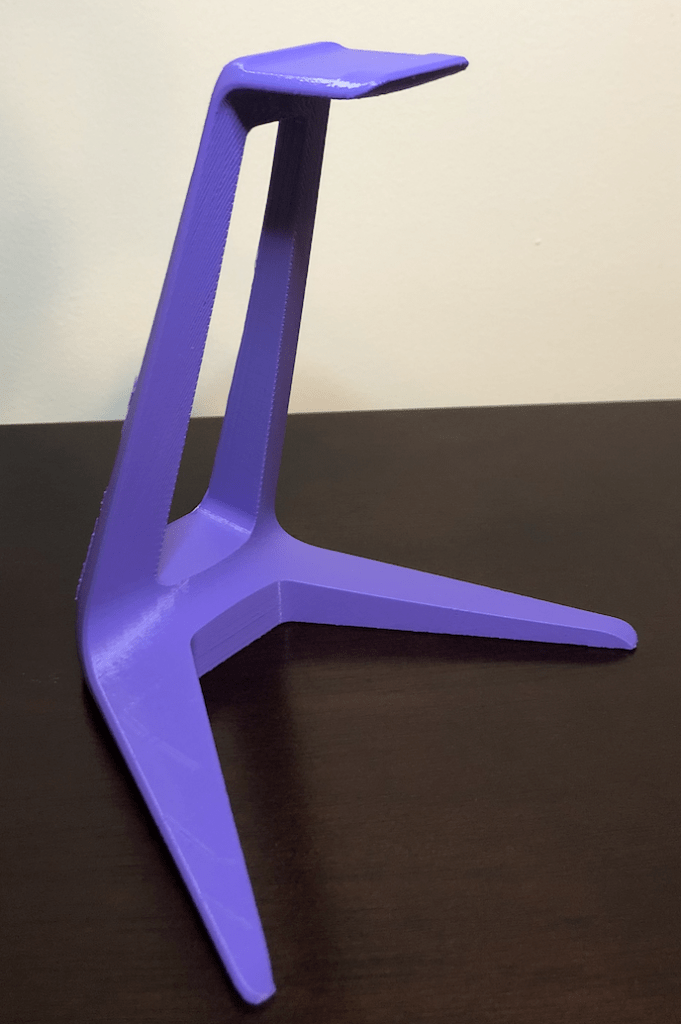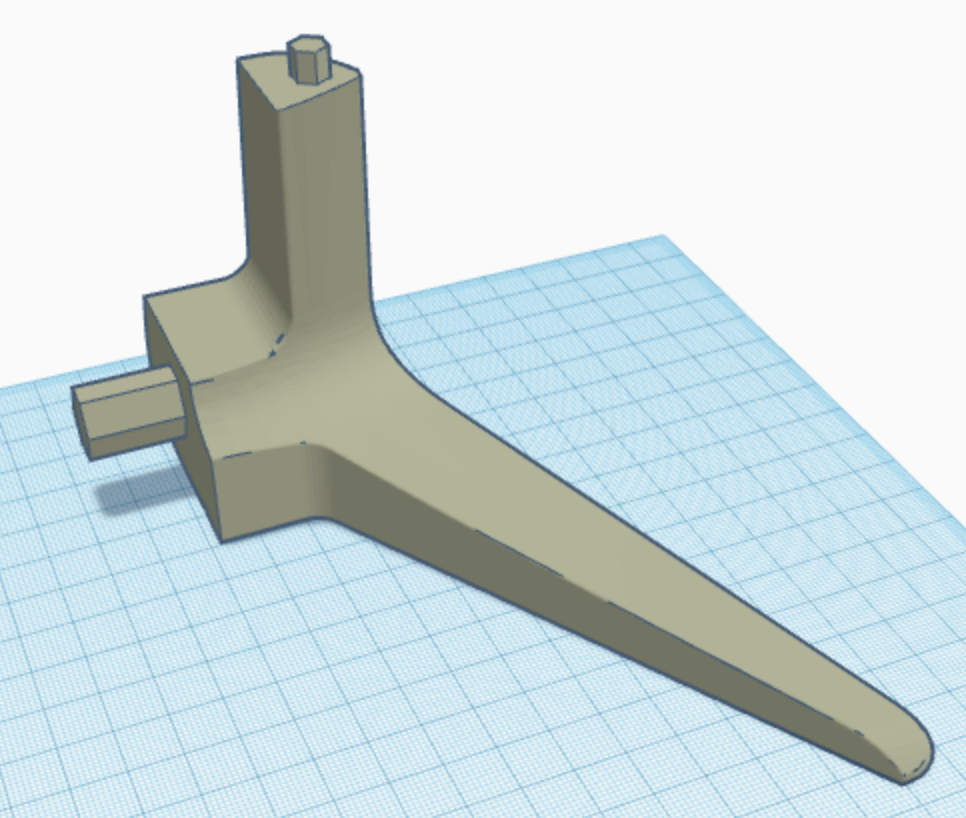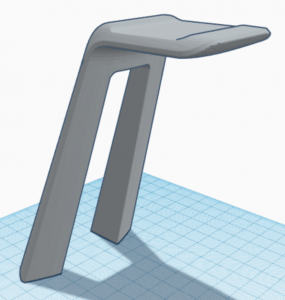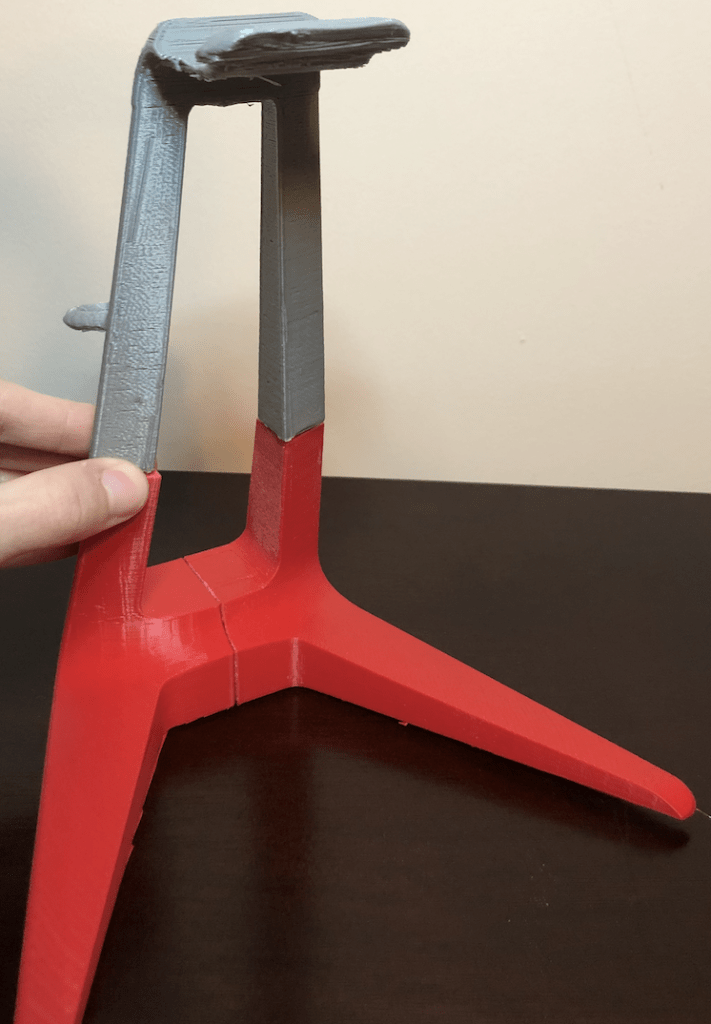When thinking of something to make on Illustrator to later upload to Tinkercad, I wanted to keep the design simple while still creating something I have wanted for a while but could never justify buying. I decided on creating a keychain because it is something I can hardly ever justify buying and I thought the design of a happy face would be cute accessory. To create this design in Adobe Illustrator, I created the circular shapes using the ellipse tool and with the mouth stacked two ovals on top of each other and merged them together, brought it to the front, and subtracted. To make the hole at the top, I also removed the fill and used the “minus front” tool. I then saved my design as an svg file and imported it onto Tinkercad. On Tinkercad I changed the width to 200mm so it would fit my workspace when I uploaded it. Once in Tinkercad, I did not need to make any other adjustments, as the design laid out as I intended it to.
Tag Archives: Hooker
3D SVG
When assigned this assignment, I had a little difficulty deciding what I wanted to make into a 3D model. To gain some inspiration, I looked into my past Adobe creations and found the perfect 2D SVG I had previously created of my puppy. As a Christmas gift, I made a digital illustration of my puppy and decided that it would be a perfect piece of artwork to turn into a 3D key chain as well. To create such key chain, I first placed the PNG of my previous creation into Adobe Illustrator. Then, I traced the image and expanded it to get the vector image. From there, I was able to create a compound path and upload such SVG into Tinkercad.
In Tinkercad, I needed to design a platform where the overall design and all its pieces could lay. If I did not do this then the design would print unattached. Therefore, I chose a circle platform and added a hole in it to make it into a keychain. I needed to resize the SVG design so that it could properly fit onto the keychain.
Steps taken on Adobe:
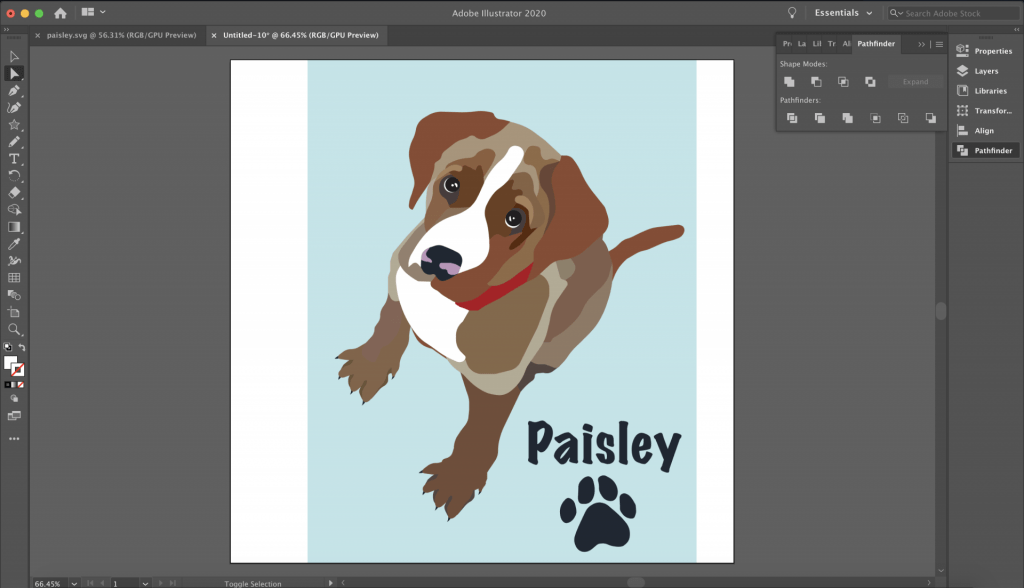

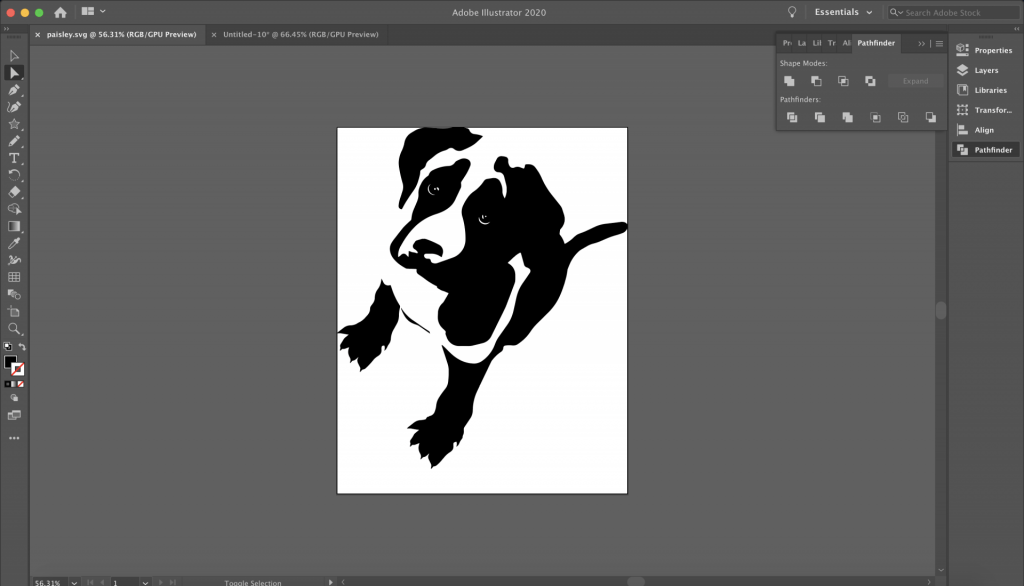
McCracken 3D SVG
I wanted to make something that tied into the love of my sport, archery. I thought about making a simple arrow but instead chose to make and arrow piercing a heart in honor of Valentines day! I drew the original PNG on my iPad Pro in Adobe Draw and shared it to my Adobe Illustrator application on my computer. I then traced the image in Illustrator and removed unnecessary white spaces or pieces as instructed by the LinkedIn Learning course. I exported the file as an SVG and chose to create a new design in Tinkercad where I imported the same SVG file. At first it was way too big, so I scaled it down to fit the work plane and saved it!

Daniel Drecun’s Form|Function
The Thingiverse object that I chose was a cable organizer created by user @tjmck. It’s designed to hold larger cables such as ethernet or phone cords. I chose this design because it was something that I personally need, but I think I could improve upon the design. I’d want to make it more friendly for smaller wires.
To improve upon the original design, I’d want the object to be able to hold wires of any size without any external means. I created “clips” so that I could stick the wires in without them coming back out unless I lifted the clips.I didn’t like that it was just a circle and I’d want to be able to stick the organizer on a desk or something else so I can easily access the wires if I needed to so I created a base for it. I thought the waves would limit the amount of cables I could put in too much so I decided to keep the compartments in a line.
F|F Iterations
Original Object: This cable organizer, created by Thingiverse user @tjmck, is designed in a circle shape with wavy patterns on the inside with the intention on holding different size cables.
Below is a video of how the print is supposed to be used.
My First Iteration: I decided that since the original had trouble with keeping the wires in place and not having enough size variation for different cable thicknesses, I should try to address those issues. Below is what I came up with.
The intentions I had behind this design included slipping the wires underneath the wedges so that once the wire was in there, it wouldn’t move. I made the base flat so that way I could tape it down to a surface instead of leaving it hanging. I tried to give each of the spaces different sizes to allow for varied wire sizes. Below is what the print looked like in real life.
Unfortunately something went wrong during the beginning of the print but it sorted itself out afterwards. I think if I had made a base it wouldn’t have came out so strange. I was surprised by the durability of the plastic when I was bending it to insert wires. I accomplished the goal of having the wires stay inside the organizer. I regret making so many compartments though, as it took away space that I could’ve used to make less of them but bigger. I didn’t accomplish my goal of being able to hold larger wires so I’ll try to improve that design again in the future.
My Second and Final Iteration: Since the first iteration that I printed was affected by some printer issues, I used a different printer this time to avoid that happening again. I made some very slight changes to the first iteration. I deleted one of the wire compartments so that I could make space for compartments that would allow for thicker wires to be inserted. I also increased the infill density from 20% to 40% to make sure that it was stronger and wouldn’t snap if a wire was shoved in there.
This model did the job I wanted it to do perfectly. I unfortunately don’t have any wires thick enough to demonstrate the bottom portion, but the rest of the compartments work perfectly. The wires slip into the side with just a little effort and stay there unless they’re pulled out. Thanks to the wedge shapes, it’s easy to pull them out as well. My biggest concern with this entire build was that it would snap into pieces but after applying more force with my fingers than it would ever need to deal with, I’m confident that this is quite a strong bit of plastic, and I will definitely be using it next time I move my things around.
Jonathan Berrang’s Form|Function
F|F Research & Concept
Single Joy-Con Grip by 3DBotMaker on Thingiverse
This Thingiverse object is a grip for a Nintendo Switch controller. These controllers are very small and somewhat uncomfortable to use on their own. The grip is designed to increase the size of the controller by giving your hands something bigger to hold onto. It is designed to make it easy to insert and remove the controller, while (hopefully) still holding it tightly in place. There are also holes in the back so that you can push the controller out when you’re done using it.
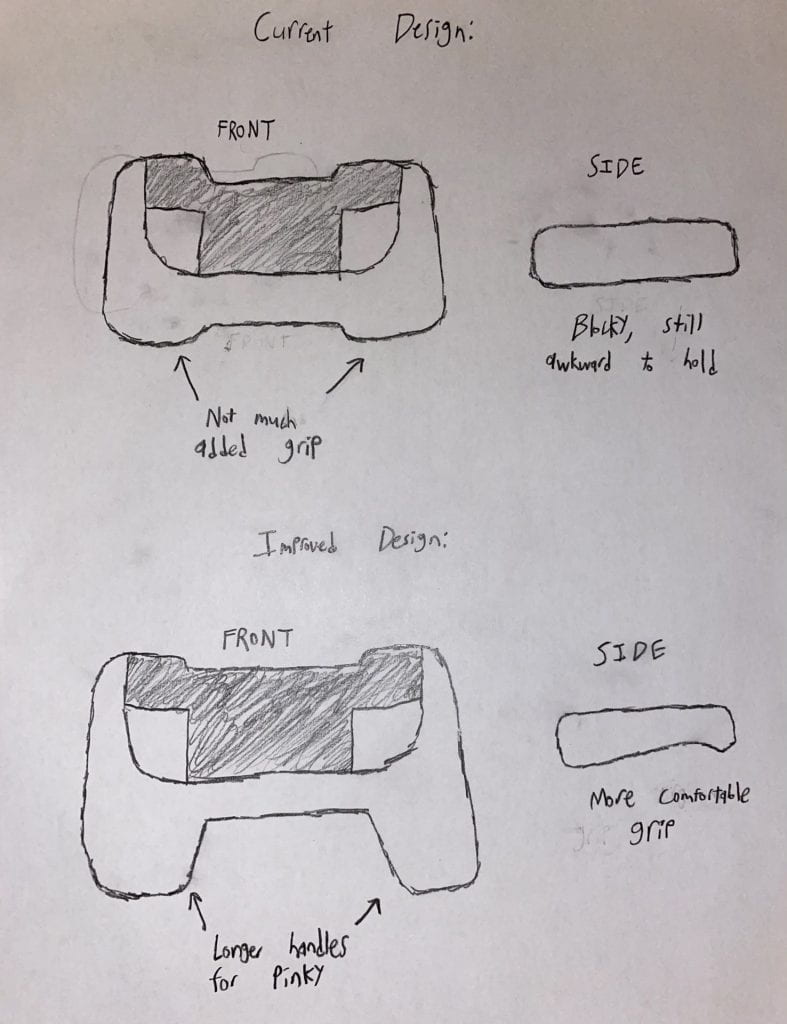
After some planning, I realized that I wanted to make some changes to the model. While I knew the grip would be helpful on its own, I wanted to take it a step further and make the handles longer, making it shaped more like a traditional controller. Another improvement I was originally planning to make was changing the back side so it would be easier to hold. On the original model, the grip is perfectly rectangular, so I considered making the back curved to give my fingers an easy place to grip.
F|F Iterations
Original Model
Single Joy-Con Grip by 3DBotMaker on Thingiverse
This is the printed base model from Thingiverse, with no modifications added.
Modifications
After seeing how the model looked in the physical world, I started to make some changes in Tinkercad. At first, I planned on extending the handles and making the back side curved. However, after testing the original print, I thought the straight back still felt pretty comfortable, so I just focused on making longer handles. For my first iteration, I simply added some rounded shapes in order to achieve this.
After working on it some more, I wanted to make sure that when printed, the handles would fit to my fingers more naturally, so I decided to replace these handles with custom extrusion shapes. It was a bit hard to integrate my additions smoothly because the original model includes rounded edges, but I tried my best to align it as well as possible.
The base model came with instructions to print with 10% infill and .25mm layer hight, so I used these settings to print both the original model and my remix. The second version ended up, structurally, as I expected, however the “layers” didn’t seem to be as smooth as the original print. The settings were exactly the same, so it may have been because I used a different printer model for the second version. After testing my remix, I found that the extended handles did make the controller more comfortable to hold as I intended, although they could have been even longer to fit my entire hand.
Final Iteration
I then went back into Tinkercad and tried to figure out a way to make the handles match the original model better. The process was very tedious, but ended up accomplishing this by adding hole shapes around the handles, which “carved” the straight edges to be rounded.
The final model and print ended up working out very well. As I was smoothing out the edges in Tinkercad, I was worried that it would come out blocky, but once I printed it it actually ended up being pretty smooth. Because I didn’t make any changes to the base model, the controller fits perfectly inside the grip. It is snug enough to stay in place while still being easy to insert and remove. The handles are now a good size, and the controller fits comfortably in my hands. Overall, this project was very challenging, but I am very happy with the way the final product turned out.
Michael Mensah Form|Function Concept

The object that I would like to recreate to show the principle of form and function is a hook . This hook can be used as hat hook or any clothing item can be hung on this item or even something like keys. I want this design to be a versatile tool that can be used at the convivence of any user.
https://www.thingiverse.com/thing:1081862

Some improvements I would like to make to this hook is to add more a curve to the hook so that the user will be able to hold more items on the hook. I feel like the length of the hook is minimizing the potential of the object. I may also look into the possibility of making the base of the hook a rectangle shape instead of a oval type shape in order to provide more stability and to look more aesthetically pleasing when in use.
The original design came out entirely too small. The overall size of the hook would not allow for optimal use. The length of the hook and the curvature contribute to the fact that optimal use could not be made out of the hook. Below are images of the original design and above is a video explaining why this design is not optimal.


The modifications I made to the original design include extending the base of the hook and making the actual hook longer so that it is able to hold more items. Modifications to the hook curvature will allow for optimal use. Below is an example of the moderations I made to the original design in Tinkercad followed by the final product of the new design.
For this second iteration I decided to elongate the curvature of the hook to allow for more items to be placed on the object but I soon realized that this iteration still did was not at its full potential as far as versatility and usage
Below are examples of the second iteration :
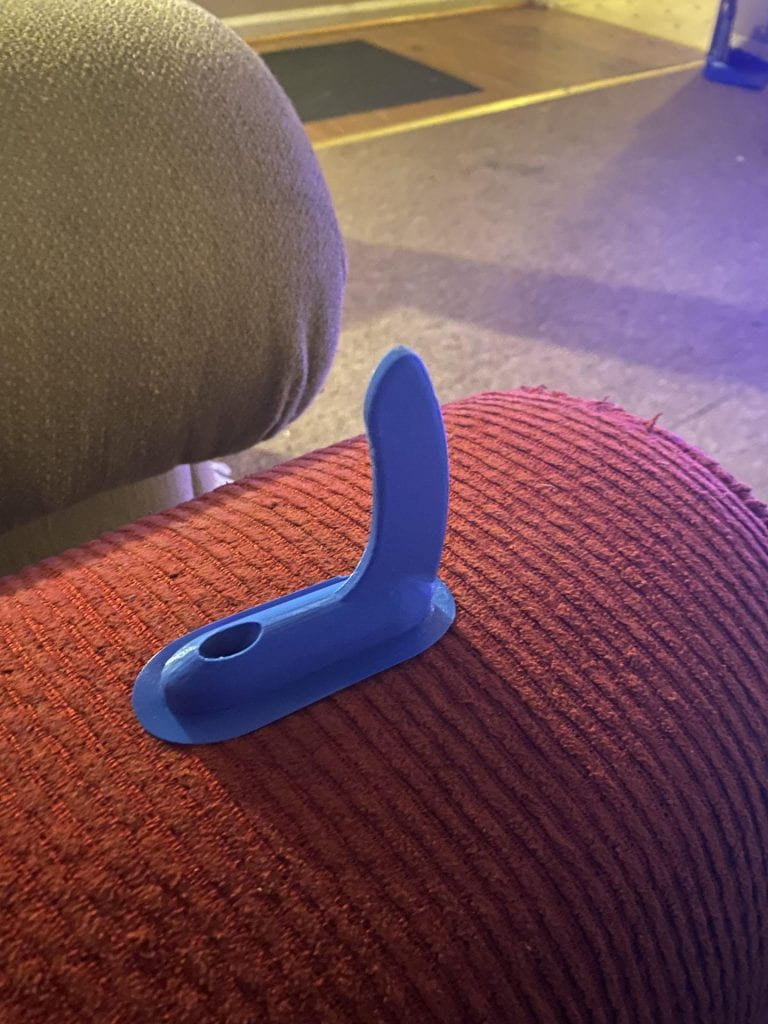

Final Iteration
Because my second iteration was not up to par with what I believe the maximum usage of this item was I decided to add some modifications. The lanyard holding side widget is what this item needed to be taken to the next level. The side widget can be used to carry smaller items such as keys, lanyards, or any other miscellaneous items like that.
Below are drafts of my final iteration in Tinkercad:


Below are images of how my final iteration turned out:


Below is an image of my final iteration in use:

Final Conclusion
As you can see, this final iteration was a huge improvement over the first two. I am very satisfied with the model that I ended up with because I was able to figure out what needed to be added in order to make this item as useful as possible. This final iteration of the model incorporates all of the design elements that I envisioned while having many versatile uses. I decided to As you can see it can be used for many items such as clothing, hats, keys, lanyards, masks, etc. This items purpose is to make any users life a lot more easier.
Megan Barton’s Form|Function Concept
F|F Research & Concept
The original Thingiverse object I choose, which is linked below the picture of the 3D print, is a remote control holder that was created by the user Niverson. The 3D model is designed to simply hold a Roku TV remote control and be attached to the wall using a screw or nail. I decided on this object from Thingiverse because I often find myself losing small objects like my tv remote and AirPods when I’m in my room and saw this as the perfect opportunity to adjust it to my own needs.
Improvements:


To improve this design I started by adding an extra pocket to hold other devices, such as AirPods. I also adjusted the hole for the nail to make it easier to hang up. Lastly, I decided to also scale the model up just a tad to make it more versatile and allow for it to hold other electronics or remotes that may be bigger.
3D View of my First Iterations:
F|F Iterations
Original Thingiverse created by Niverson:
This is the original design that the user Niverson on Thingiverse created with no modifications or adjustments.
Remixed Thingiverse:
This is my remixed version of Niversons design, I simply adjusted it so that the back wasn’t rounded that way it would fit better to the wall. I also adjusted the original design by adding a ledge so that it could hold more things, such as Airpods. Additionally, I set the infill to 25% instead of the original 10%, which seemed to help make it more sturdy and reliable than the initial print. Despite making my version more sturdy and better fixed to the wall, I didn’t scale it correctly which caused the ledge to be virtually useless since only very tiny things can fit in it. Overall, I learned a lot from this print including that I need to scale my designs and pay more attention to dimensions before printing.
3D View of Final Iterations:
Final Print:




After my first print with my original iterations, I realized that I was going to have to make some adjustments to the scale of the model. In order to do this, I found the dimensions of a Roku remote and Airpod Pro case online and then drew a few models to better visualize what adjustments I was going to have to make in Tinkercad. In the end, I also decided to add two extra millimeters throughout the whole design for some extra space in case you wanted to use it to hold more things. All in all, this project was a big challenge for me in that it pushed me to learn more about 3D printing and that you don’t always get it right on the first try.
Julianna Barnaba’s Form|Function
F|F Research & Concept
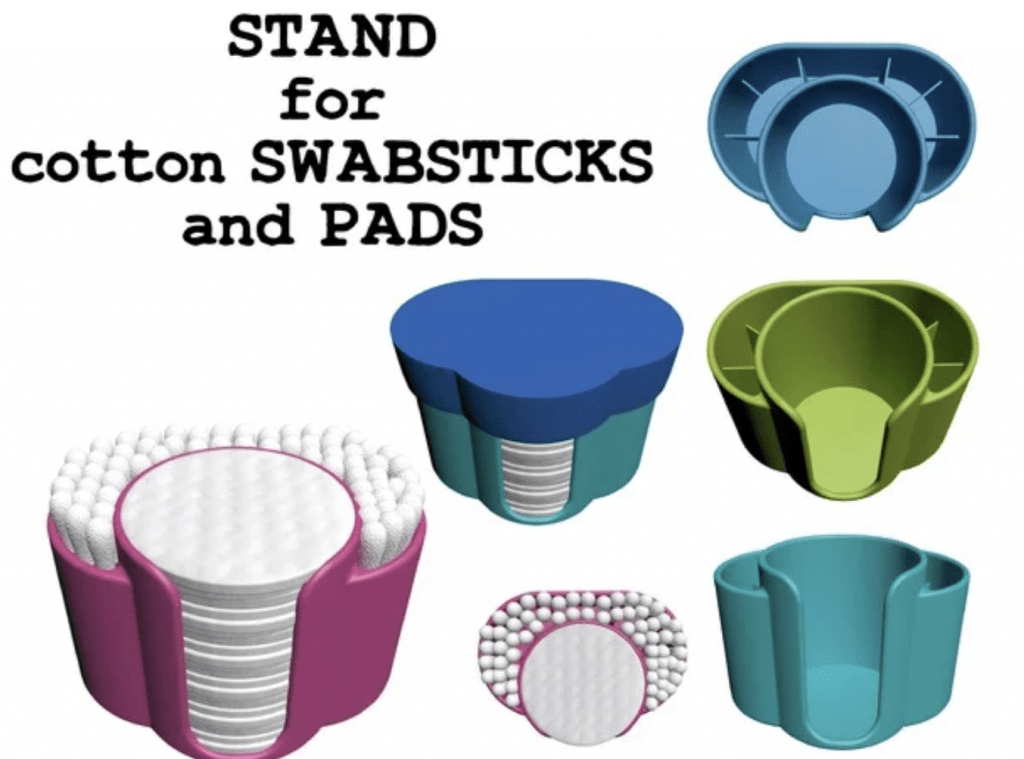
The object I would like to make to demonstrate form and function is this cotton swab and cotton pad container. The purpose of this is to effectively organize those items and either leave the out on your counter or be able to store them away or travel with them using the lid. It is perfectly fitted for the round pads and contains small compartments to fit in a bunch of swabs.
https://www.thingiverse.com/thing:4723700
Some personalizations I would like to make in order to make it more usable for me would be to lessen the amount of compartments. By making only 3 compartments it would give me more space to fit something other than just cotton swabs that may be bigger like makeup brushes. Another personalization I could make would be to make the base of it wider. The original design is just under 119 cm wide. If I made it 123cm I think that would be enough to give more space to fit other things, all while keeping the spot for the cotton pads the same size.

F|F Iterations
This is my original print of the un-altered cotton swab and q-tip holder by Syzguru11 on Thingiverse. This print took about 7 hours and came out great. In my sketches I mentioned wanting to get rid of some of the walls that section it off but after seeing this first print I decided to focus on just removing the lid and the lip at the bottom of the front opening.
After seeing the original print I decided I wanted to remove the small lip from the bottom of opening in the front. I thought this would be a good idea since having that there may make it more difficult when trying to get out the last cotton pad. Finally, I decided to remove the lid seeing as it was not very useful and for myself it did not seem to serve a purpose.
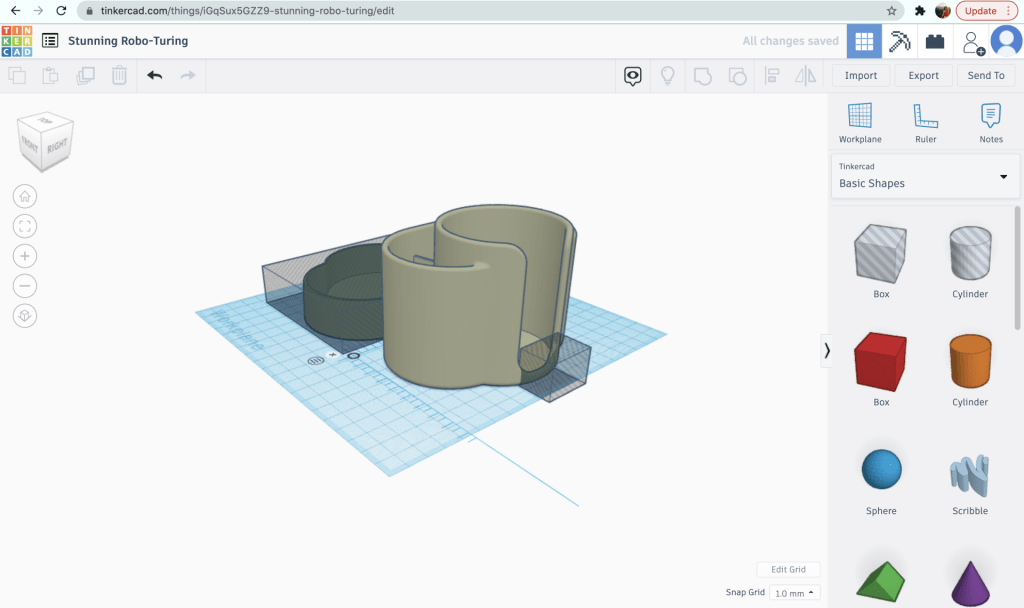
If I had more time to test out more versions of this print I would try to take out some of the walls that make the compartments but when I tried to do that originally, I could not figure out how to properly cover the wall with a hole without messing up anything else in the process.

As you can see the lip was removed but not in the best way. It was hard for me to tell how it would turn out on Tinkercad but obviously this still works and I think was a beneficial change.
Overall, the process of remixing and reworking this print was really fun and I learned a lot about Tinkercad. I wish that I had more time to reprint my last version without the walls but either way I think my final print was good enough and it has already been extremely useful!

Daniel Cymes’s Form|Function Research & Concept
Original Thingiverse object:

The image above is a model of an engineering stencil ruler designed by @JojodaHobo. It allows individuals to plot straight lines on paper and trace other precise geometric shapes. It is an essential tool for engineers, architects, and individuals who simply want to add precision to their sketches. There is a multitude of shapes cut out of the filament, allowing creators to make a perfect circle or right triangle, among other designs. It is a simple and common object that is extremely useful to designers of all different backgrounds.
Personalizations and Improvements:

The image above represents how I envision modifying the existing object. Although I want the height and the length to stay the same, I would like to increase the ruler’s width from 1mm to 2mm. This would make the object much more sturdy and durable. I also would like to remove some of the original geometric stencil shapes, and replace them with shapes that are more tailored to my design tendencies. Overall, I was pleased with the majority of the original design elements, but my desired modifications will make this an even more practical tool.
Form|Function Iterations
Original Thingiverse Object:
Pictured below is a 3D print of the original Thingiverse object, attributed to @JojodaHobo. This print contains no personal alterations or modifications. Because the ruler only has a thickness of 1mm, it is very flimsy.

Iteration Process:
At first, I was quite intimidated by the thought of adding my own modifications to this ruler. I was uncertain on how I would go about filling the stencil shapes that exist in the original design, in order to implement my personalized stencil shapes. Below is a time-lapse video that demonstrates how I designed my Tinkercad remix. The entirety of the process took roughly 45 minutes.
Posted below is a 3D view of my completed Tinkercad remix.
The pictures below are of Tinkercad designs that I incorporated into my iteration. The lightning bolt was designed by @blaise-miranda and the high contrast squiggles were designed by @Annie-Sullivan. I transferred both of the shapes into my workplace and then transformed them into holes, in order to create two separate stencils on the ruler.
Functionality:
In the video below, I demonstrate the functionality of the object that I remixed.
Overall I was very pleased with how my iteration turned out. By increasing the original ruler’s thickness from 1mm to 2mm, the durability was clearly improved. I also increased its personal functionality by adding personalized stencils that will provide me with greater design benefits.
I only ran into a few slight problems. When removing the base filament from the ruler, it made the primary straight edge a little jagged. Normally this would not be a problem, but because one of the sole benefits of using a ruler is having a smooth straight edge, it created a slight drawback. In order to overcome this inconvenience, I merely had to sand it down. The only other issue that I had was that the numbers and marks on the ruler showed up very faintly.
Iteration #2:
After spending a few days using the first iteration I created, I realized that the problems that I initially identified upon the completion of the print were going to require me to complete a second iteration. The two primary problems I had were these: it was a little too thick, which prevented me from using some of the stencils with a pen, and the straight edge was jagged because of the raft that was printed with it.
To solve these problems, I decided to decrease the height of the ruler from 2mm to 1.5mm and remove the raft from the print settings in Ultimaker Cura.
I also wanted to address the comments and critiques that I received from my classmates, which mainly emphasized the lack of numerical markers and measurement lines.
In the slideshow above, I demonstrate the modifications I made to my initial iteration. As stated above, the most significant changes I made include the addition of number shapes provided in Tinkercad, measurement lines made from rectangle blocks, and a decrease in height.
Although the height change made all of the stencils usable, while simultaneously maintaining its durability, I created a completely new problem in this iteration. Upon closer look, one can see that the rectangle boxes that I converted to holes, in order to create measurement lines, ended up creating divots in the ruler’s straight edge.
Final Iteration
These pictures are of my final ruler iteration. Although I was able to eliminate the divots that were previously present, I ran into a new problem. As pictured below, the squiggle stencil did not print properly due to a printer malfunction.
Conclusion
After completing 3 different iterations of the ruler, I was still not able to make the perfect print. This was in part due to time constraints out of my control and printer inadequacies.
Overall I am not disappointed, as I was able to sand down the rugged edges of the first ruler that I printed to optimize its functionality. Although I cannot easily use all of its stencils and it has very faint measurement markings, it serves its main goal perfectly–allowing me to draw a straight line!
If my final iteration had not been messed up by the printer malfunction, it definitely would have been the best of all three iterations. Not only was the straight edge smooth, but it also had clear numerical markings and measurement lines. Below is a picture of the printer settings I used to print the ruler. Hopefully I can find time to fully ‘straighten’ any remains problems out.
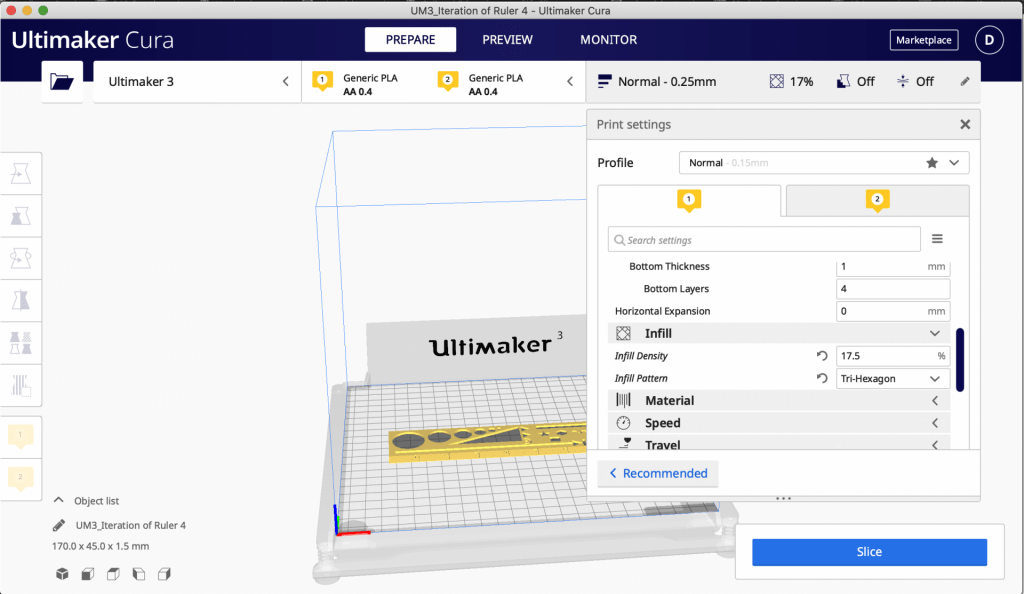
Chance’s Form|Function
F|F Research and Concept:
The original concept is made for a simple headphone stand. The legs are meant to balance out the weight from the arching top point that hovers over the center of the piece. The piece is meant to serve as a stand for gamers or anyone that requires headphones in general. A stand is essential for tidying up a desk space. This particular stand creates a balance from the top to the bottom so that it does not tip over, this will be challenge to uphold in changing the original design.

Potential Personalizations/Improvements
The overall size needs to be smaller. In addition, the divot at the top where the headphones rest needs work. I look to improve that by creating a much more definitive arch that would prevent the headphones from coming off the stand as easily. Something that I would also like to include is an optional piece that allows for cord management if users had cords to deal with. The piece could be a clip that is easy access on the side. The major challenges with each of the improvements will be curvature. I will need to learn what will be acceptable for printing and what will ultimately need to change so the overall design will work.
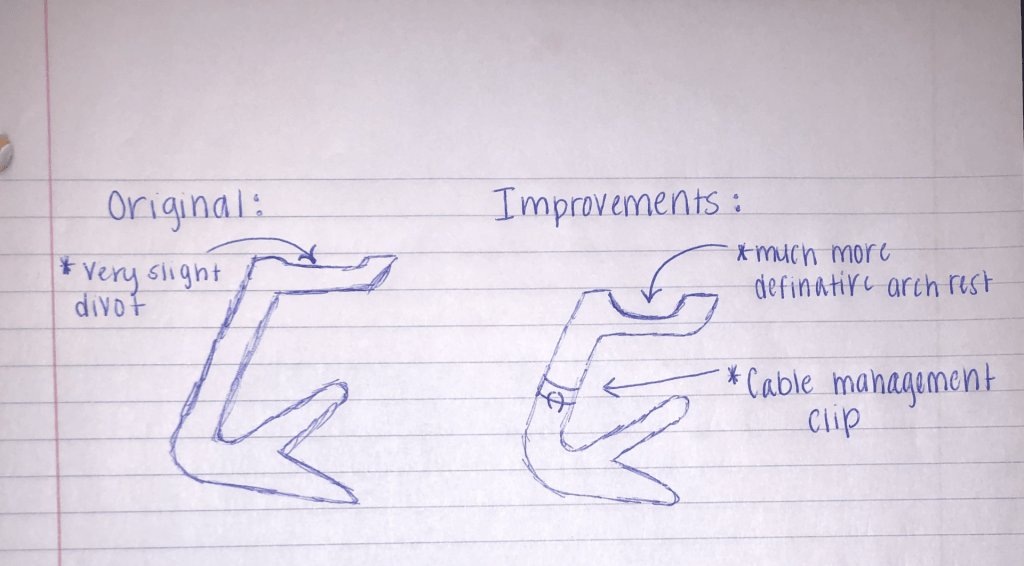
F|F Iterations:
For my initial approach to this print, I chose to print the original that I first saw on Thingiverse by @makerbot. The original unfortunately was meant for a larger printer than we have access to in the labs. So I ultimately had to scale the size down a bit. If scaling down wasn’t a factor, this piece turned out really well.
Moving forward from the initial design, I chose to print a remix by @N3D_printing. In this remix there are three parts to the design and each one snaps into the other. In the pictures above you can see the three initial pieces along with different views of the top piece.
In addition to trying the new print, I tried different variations of the top piece with my alterations. All pieces were full scale, printed to specifications of the creator, besides my alterations for a deeper headphone rest and a cord management clip.
The largest factor in the most recent print was the height requirement being tall enough for the headphones. In print 1, I downsized for a difference in printers. In print two, I tried to attempt a different remix that made it so I would be able to piece the components together. The main points that went wrong were the sizing on the pieces compared to the hole In which the piece is supposed to connect to. None of them would snap in correctly. As a result, I ended up sanding the snap in pieces down to just super glue it together for now. One thing that did work was the more definitive arch in the top. It printed differently than anticipated, but still stayed balanced. The other modification technically worked, but not as planned. The original had the issue of size, but the remix had many more issues with structure. I will be changing and reworking ideas to maybe mesh the two together for the final. As far as my specific iterations, I now understand what will work and what isn’t plausible.
F|F Final Print and Reflection:
For my final I chose to return to the original Thingiverse creation by @makerbot . I chose to do this because the remix had a great idea, however the amount of modifications took too much time for my situation.
My modifications stayed relatively the same, the arch had no change. The clip however, I moved down and around toward the back. I did this because the cords for headphones are usually placed on the bottom of headphones so with the chosen placement, it pulls the cord up and out of the way; Far more accessible than the last iteration.
I’m a firm believer in nothing is perfect and there is always room for improvement. So, this is my final I will be going with, but there is definitely room for improvement if given the chance in the future. I learned a lot from start to finish!
Notable Print Settings:
- Infill: 30
- Layer height: 0.2




